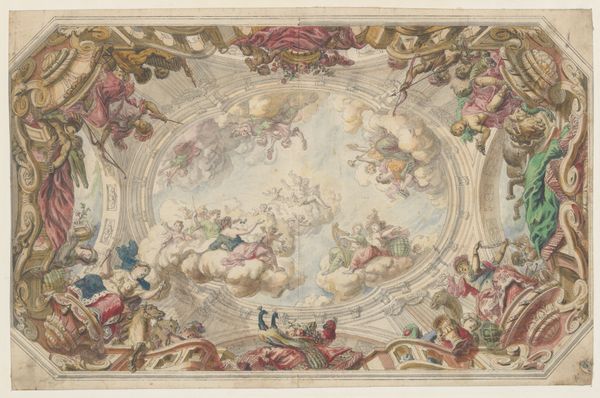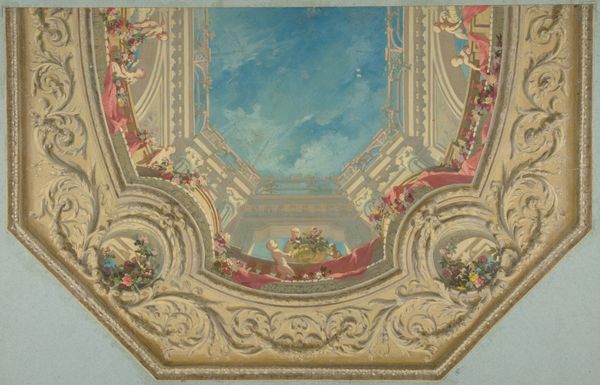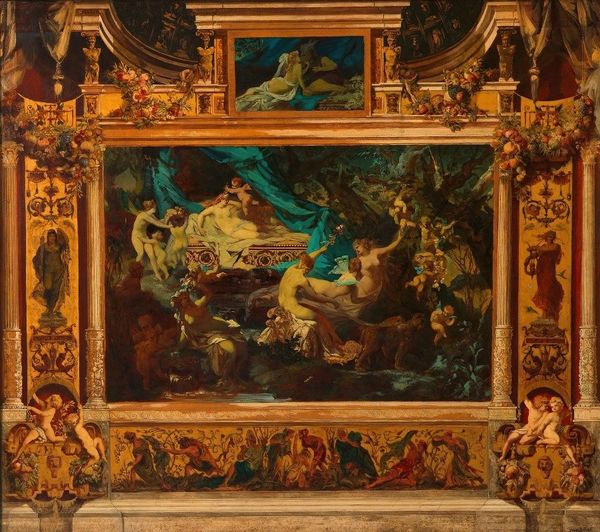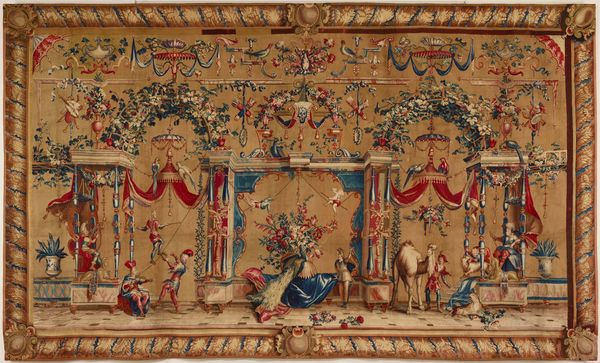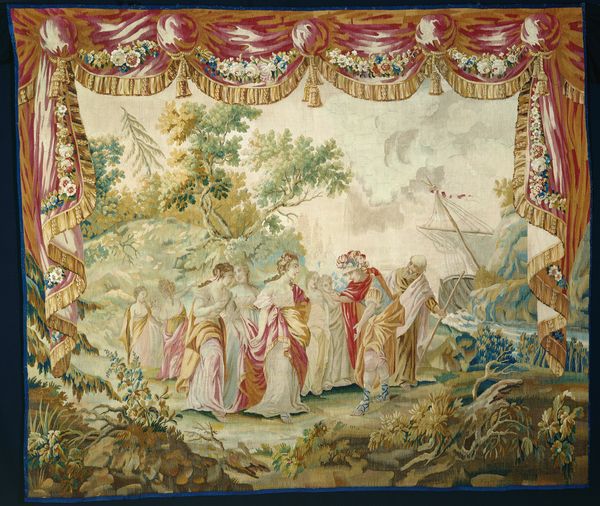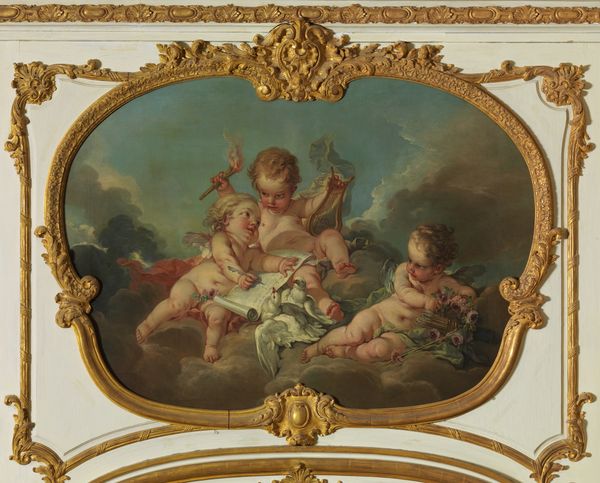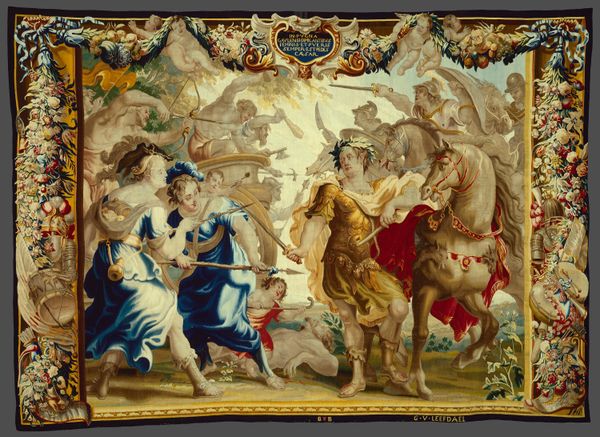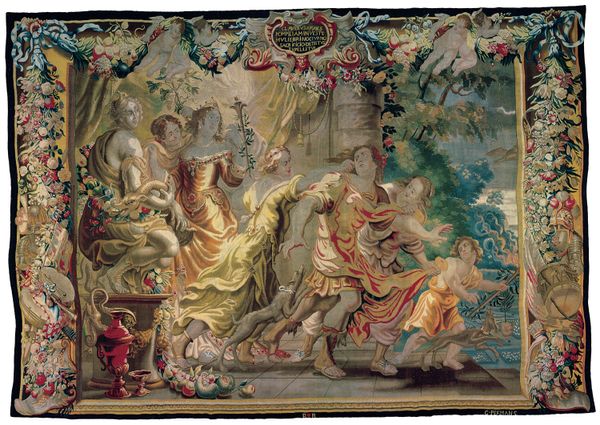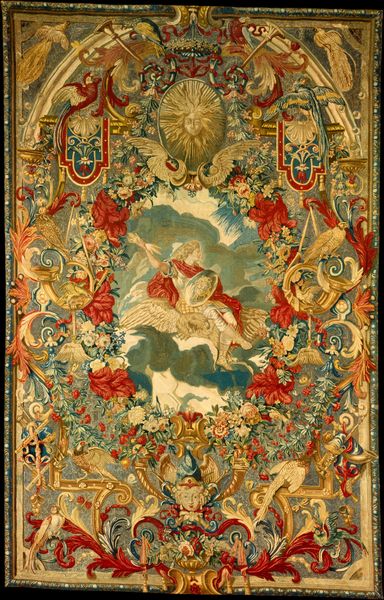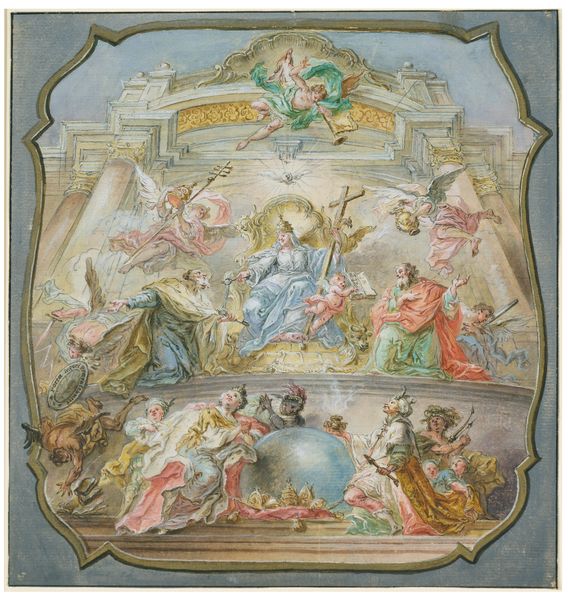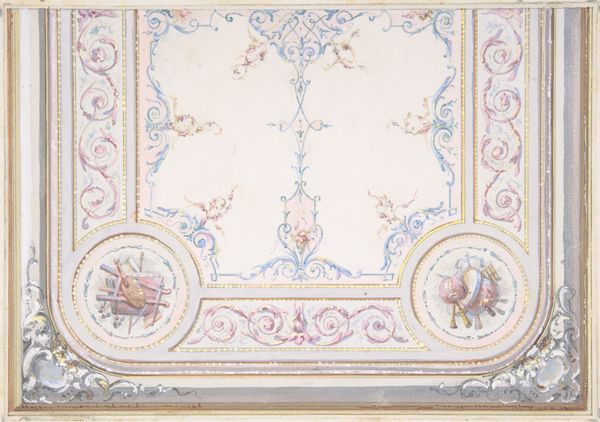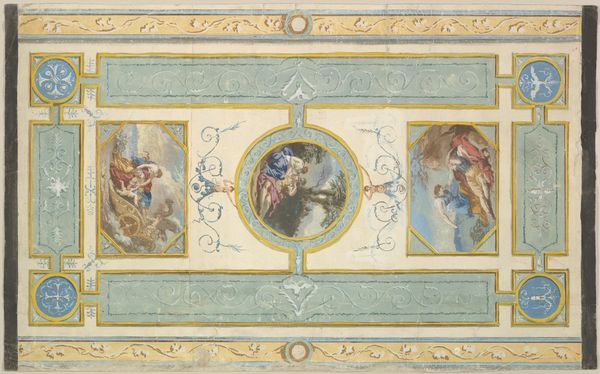
The Memorable Judgment of Sancho Panza from a series of tapestries with scenes from Don Quixote (number twenty-four in a series of twenty-eight) 1725 - 1755
0:00
0:00
textile
#
baroque
#
landscape
#
textile
#
figuration
#
history-painting
#
decorative-art
Dimensions: 12 ft. 3 in. × 15 ft. 9 in. (373.4 × 480.1 cm)
Copyright: Public Domain
Curator: This tapestry, "The Memorable Judgment of Sancho Panza," was made sometime between 1725 and 1755 by the Manufacture Nationale des Gobelins. It's incredibly ornate, and part of a larger series of tapestries depicting scenes from Don Quixote. What strikes you most about it? Editor: It’s so decorative! All the flowers and the elaborate frame within the tapestry itself give it a sense of grandiosity. What do you see in this work, particularly thinking about its context? Curator: I see a fascinating commentary on power, justice, and societal expectations. The scene depicts Sancho Panza acting as governor, rendering a judgment. Woven into this historical narrative are the complexities of class, performance, and the very nature of governance. Look at the tapestry's details: the theatrical staging of the scene, the opulent setting. These elements speak volumes about the performative aspects of justice and the role of spectacle in maintaining social order. Editor: So, you’re saying it's not just a pretty picture? That it comments on power structures? Curator: Exactly. Consider the historical moment. Tapestries like this were commissioned by the elite. They served not only as decoration but also as tools for self-representation. The depiction of Sancho Panza, a commoner suddenly thrust into a position of power, can be seen as both celebratory and cautionary. Does it celebrate upward mobility, or reinforce existing hierarchies by showcasing the "unsuitability" of the lower class for positions of authority? Editor: It's interesting to think about the tapestry as a political statement, almost propaganda. Curator: Precisely. How do you think a contemporary audience might interpret the work's representations of justice and social mobility? Editor: I think we’d probably be more critical of those in power, questioning their motives and whether justice is truly being served. Curator: And that's exactly why studying historical art through a contemporary lens is so vital. It challenges us to examine our own biases and assumptions about the world. Editor: This has totally changed how I see tapestries. I was just thinking about them as beautiful wall hangings.
Comments
No comments
Be the first to comment and join the conversation on the ultimate creative platform.
